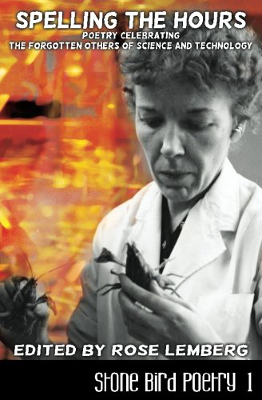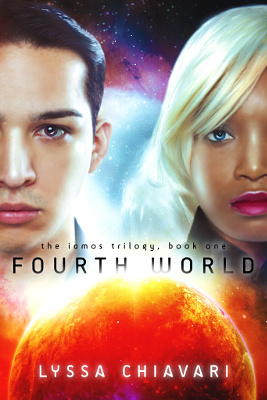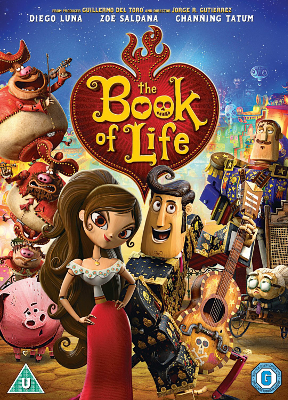Alternate Titles: Saban’s Power Rangers
Genre: Young Adult Superhero / Film
Main Creative Team: Dean Israelite (director); John Gatins (screenplay); Matt Sazama (story); Burk Sharpless (story); Michele Mulroney (story); Kieran Mulroney (story)
Main Cast: Dacre Montgomery; Naomi Scott; RJ Cyler; Becky G; Ludi Lin; Bill Hader; Bryan Cranston; Elizabeth Banks
First Shown: 22nd March, 2017
Available: Cinemas
Five teenagers find coloured coins, which lead them to an alien spaceship. It turns out they’re Power Rangers and only they can save the Earth from Rita Repulsa (Elizabeth Banks).
This reboot of the franchise shows the formation of the first team of human Power Rangers. Jason (Dacre Montgomery) is the Red Ranger and the leader of the group. Kimberly (Naomi Scott) is the Pink Ranger and a former cheerleader. Billy (RJ Cyler) is the Blue Ranger and is a nerdy tech genius. Zach (Ludi Lin) is the Black Ranger and is a carer for his sick mother. Trini (Becky G) is the Yellow Ranger and a loner. They come together by being in the same place at the same time, where they find the coins that give them their powers.
Consequences are important in this story. Jason is introduced with a prank gone wrong, which leads to animal abuse and reckless driving. It’s lucky that no one dies. Kimberly has also behaved badly towards others. Initially, it looks like her former friends are being randomly mean to her, but it becomes apparent that she did something to cause that reaction. There’s no magic to put things back how they were, but it is possible to rebuild. It also shows a more grey approach to characters, where generally decent people can do awful things.
The rangers all start out as strangers to each other. There’s a lot of friendship building going on. Jason and Billy get the most development time. I also liked that Kimberly and Trini are shown hanging out, and offering each other support, after Trini’s initial distance from the group. It’s interesting to see how different friendships develop within the group.
There’s some suggestion of romance between Kimberly and Jason, but it felt natural that they’d identify with each other, given their situations. It also doesn’t go beyond a few looks and comments. There may be a kiss in the trailer, but this isn’t in the film, which is a good choice. I’m all for a bit more slow building in relationships.
I had mixed feelings about the camera angles used. There’s a lot of switching around views on things like car chases. It does create the feel of confusion, and the difficulty in staying aware of surroundings, when in such a situation. I did generally like the sets and shooting choices, but this one was a little difficult for me as someone who gets motion sickness.
There are a number of differences in the casting compared to the original series. Jason is the only remaining white character in the new team, though I’d note that he’s also the leader and the one set up as the initial character the audience meets. I realise this can come from a place of trying to get through the system, where a film with an apparent white lead is more likely to get funding, but it’d still be nice if this wasn’t needed to play the system.
In general though, the group is more diverse than the original series. The positive is that the new casting means Billy is African American, Trini is Mexican, Kimberly is South Asian and Zack is Chinese. This does broaden it out from the source material, and avoids having the Black Ranger as the black character, and the Yellow Ranger as Asian. The negative is that Trini used to be played by a Vietnamese actress, and there are no new East Asian girls in any role, so that’s an area where representation was lost. This is always a difficult issue, as the change will mean some people will see themselves who wouldn’t have before, and some won’t see themselves the way they did before. It’s a problem with media in general lacking diversity, that any such changes can have a big impact. This film is what it is in terms of who is shown, but I’d hope they’ll consider continuing to reimagine characters. I would love to see them consider an East Asian girl for the new ranger hinted for the sequel.
Billy is autistic and states directly that he’s on the spectrum. He describes himself as having a different way of thinking, rather than describing himself in negative ways. There’s a lot that I related to with Billy, from the tendency to monologue during difficult tasks, using scripts to introduce himself, and not liking to be touched. It’s also notable that he’s black, as portrayals of autistic people are often white people. This relates to wider problems, such as the underdiagnosis of black autistic people and issues faced dealing with groups like the police. It’s important for people to realise that autistic people can be anyone.
Trini is queer of some description. Zack guesses she might have girlfriend problems, based on her reaction to him assuming she has boyfriend problems. It’s uncertain exactly how she identifies, and the feeling I got was she was questioning. She’s figuring out labels, which aren’t the ones her family want for her. There are arguments both ways for having a clearer statement. On the one hand, films often avoid using the words, so it’s nice when it is made clear. On the other, this is the first section of a longer story, so it’s possible they’ll pull off questioning turning into figuring things out.
There were bits I didn’t like. The opening scenario with the prank was my least favourite part, because it felt like I was supposed to find it funny. It’s pretty hard to find something funny when it involves an unhappy animal.
Another part I wasn’t fond of was Kimberly stripping down to a bikini as Jason watches without her knowing. This is so she can swim, and if she’d later shown her awesome swimming/diving skill, it might have fit. But this isn’t shown again. I’d compare that to Trini, who is a hiker, being the first to figure how to use her powers to move quickly across terrain. There isn’t a similar swimming/diving moment with Kimberly. There could have been, given the locations used. So she appeared to be in her bikini in order to be seen by Jason.
There’s some throwing around of terms like crazy and lame, though the crazy part is more a description of the rangers rather than their opposition. Rita is mainly described as evil, rather than crazy.
The armour designs do have the thing where the girls get rounded breast plates and the boys get angular ones, though at least their armour covers them equally. The exception is Rita’s armour, as apparently the more evil a person gets, the sexier their armour and the less skin it covers.
There’s a little bit of swearing, some sexual references, and violence. It does take care to have monsters raised by Rita as the main opponents. In other words, opponents that aren’t sentient. The scariest parts are down to Rita, who threatens and murders people. That could be a little heavy for younger viewers, though most in the suggested range of tweens and up should be fine. I’m noting this because the original series was aimed a little younger, which some may not realise when deciding on this film.
I was pleased they did actually say, “It’s morphin time!” It may be a small thing, but I will never forgive Fantastic Four: Rise of the Silver Surfer for not including, “To me, my board!” Some catchphrases really need to be there.
It was a fun film. It had the colourful action expected from the franchise. The serious aspects covered a range of issues that teenagers can face, without getting too heavy. Combined with the diverse cast, it means a lot of children and teens will be able to see themselves, as well as enjoy the action. There were some scenes I didn’t like very much. There are also a few things I hope they develop in the sequels, such as Trini’s identity story, and how they cast future rangers. I will be on board to see where it goes next.
 Full Title: Spelling the Hours: Poetry Celebrating the Forgotten Others of Science and Technology
Full Title: Spelling the Hours: Poetry Celebrating the Forgotten Others of Science and Technology Genre: Children’s Spy / Television Series
Genre: Children’s Spy / Television Series Series: The Iamos Trilogy, #1
Series: The Iamos Trilogy, #1 Genre: Children’s Fantasy / Film
Genre: Children’s Fantasy / Film